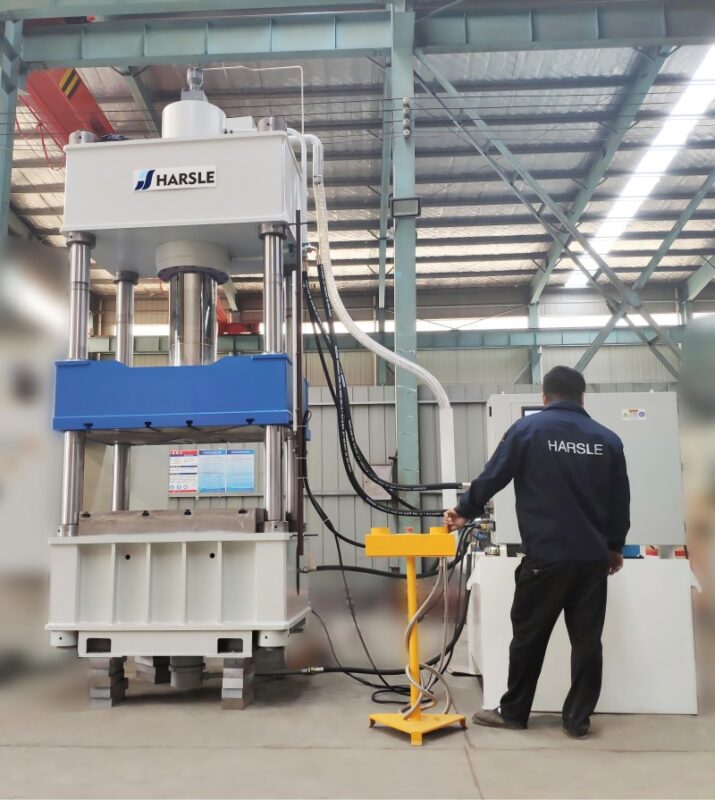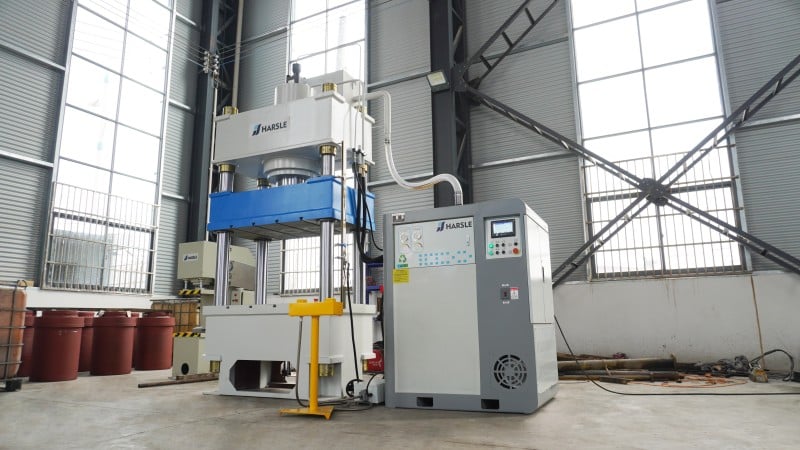Documentation Hub
Comprehensive technical manuals and guides to help you master HARSLE machines and optimize your metalworking efficiency
How to Extend Hydraulic Press Lifespan?
Hydraulic Press Lifespan is the cornerstone of efficient metal forming, directly impacting your machine’s uptime and return on investment. If you’re looking to boost your press’s longevity, you’re in the right spot. In this guide, I’ll walk you through time-tested approaches—from precise installation and scheduled maintenance to smart operating routines—that safeguard your equipment, cut down on breakdowns, and keep your production line humming smoothly for years.
Proper Installation and Setup
Leveling and Foundation Preparation
Before you even fire up your press, I always start by ensuring the foundation is solid. A level, vibration-free floor prevents undue stress on the frame and cylinders, which directly impacts hydraulic press lifespan. I recommend pouring a reinforced concrete pad, then using a precision level to adjust mounting bolts until the platen sits perfectly square.
Alignment of Hydraulic Components
Misaligned cylinders or improperly torqued fittings can introduce uneven loads that accelerate wear. When installing your press, I check alignment with feeler gauges and confirm that all hose fittings and manifold ports are torqued to manufacturer specifications. This attention to detail reduces internal leakage and maintains consistent system pressure.
Routine Maintenance Practices
Checking and Replacing Hydraulic Fluid

Oil quality is the lifeblood of your press. I schedule fluid analysis every 250 operating hours to detect contamination or viscosity changes. When I spot moisture or metal particles in the sample, I perform a full drain-and-fill using the recommended ISO-rated oil. Keeping fluid clean and at proper levels is critical to extending hydraulic press lifespan.
Filter and Seal Inspections
Clogged filters starve pumps, while worn seals allow pressure loss. Every month, I inspect the return-line and suction filters and replace them if pressure differential exceeds 10 psi. I also visually examine rod and piston seals for nicks or hardening, swapping them out preemptively before catastrophic failures.
Lubrication of Moving Parts
Although the hydraulic system handles force, guide rails, bearings, and pivot points still need grease. I apply high-pressure lithium grease according to the machine manual—usually every 100 hours—ensuring smooth travel and reducing friction wear on mechanical linkages.
Adopting Proper Operating Procedures
Avoiding Overloading and Shock Loads

One of the fastest ways to shorten your hydraulic press lifespan is by exceeding rated tonnage or dropping loads. I always train operators to verify workpiece thickness against capacity charts and to use press controls for gradual tonnage ramp-up. This reduces hydraulic shock and protects internal components.
Gradual Pressure Changes
Rapid cycling from zero to full pressure creates pressure spikes that fatigue hoses, seals, and valves. In my experience, programming a soft-start ramp of 1–2 seconds per cycle greatly extends component life. I also avoid sudden directional changes on four-way valves, which can lead to water hammer and pressure surges.
Monitoring Environmental and Usage Conditions
Temperature Control
Hydraulic oil viscosity—and therefore system efficiency—varies with temperature. I maintain shop temperatures between 15 °C and 30 °C and install oil coolers if peak system temperatures exceed 60 °C. Cooler oil reduces thermal breakdown and extends hydraulic press lifespan.
Cleanliness and Work Area

Dust, metal chips, and moisture are enemies of any hydraulic system. I enclose the workzone when possible and clean the machine daily with a dry cloth and industrial vacuum. Removing debris from the ram area prevents grit from contaminating seals and fluid, allowing the press to operate smoothly.
Upgrading and Retrofitting for Longevity
Adding Condition Monitoring Systems
To catch developing issues early, I’ve installed pressure transducers and vibration sensors on key components. Real-time alerts for abnormal pressure drops or bearing vibrations let me schedule maintenance before small problems become costly failures.
Retrofitting with Advanced Seals

Modern polyurethane or PTFE seal kits offer superior wear resistance compared to older nitrile designs. When I upgrade seals, I choose parts rated for higher temperature and pressure, which pays dividends in reduced leak-down and longer service intervals.
Frequently Asked Questions
Q: How often should I change hydraulic fluid to maximize lifespan?
A: I recommend fluid analysis every 250 hours and a complete fluid replacement every 1,000 hours, or sooner if contamination levels rise above ISO 18/16/13.
Q: Can I extend my press life by adding an accumulator?
A: Yes. Installing a hydraulic accumulator smooths pressure fluctuations and reduces pump cycling, which in turn decreases wear on valves and motors.
Q: What’s the best way to prevent seal failures?
A: Keep fluid clean, avoid overheating, and inspect seals every 500 hours—replacing them at the first sign of wear or hardening.
Q: How do I know if my press foundation is harming my machine?
A: Look for uneven platen contact or frame cracks. If you see chatter during operation, re-level the press and reinforce the pad.
Conclusion
By following these installation tips, sticking to a rigorous maintenance schedule, and adopting smart operating habits, you can dramatically extend your hydraulic press lifespan. I’ve seen presses run reliably for decades when cared for properly, and I’m confident these practices will help you minimize downtime and maximize productivity. For personalized support or to discuss retrofit options, don’t hesitate to contact our team today.













